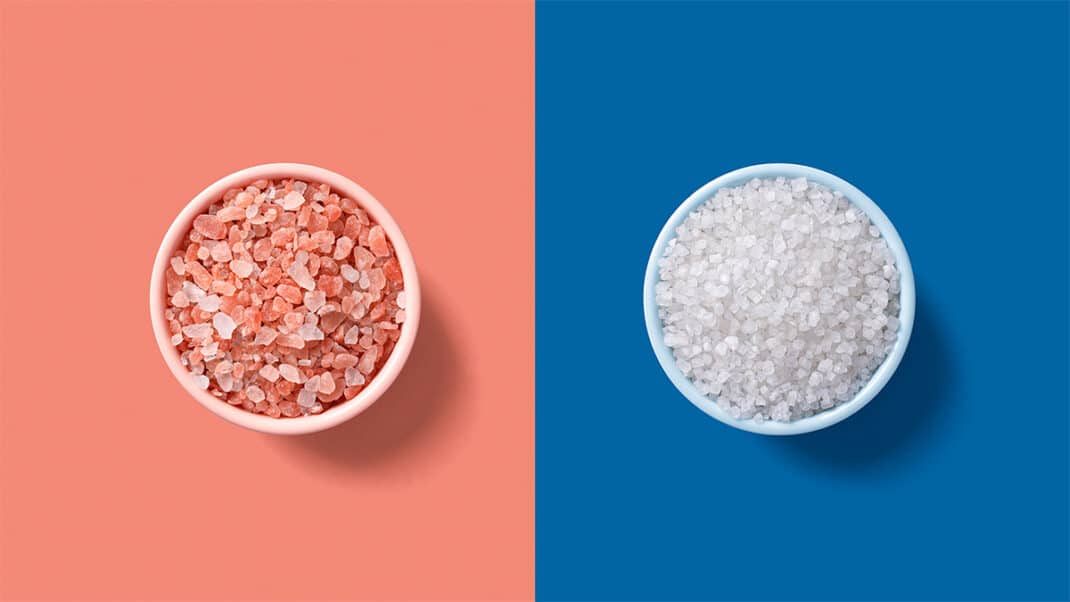Himalayan Pink Salt: Buy or Bye?
Shaking out the facts.

This eye-catching salt is mined from ancient salt beds in the Himalayas and gets its pretty rosy hue from trace amounts of iron. Since people perceive Himalayan pink salt to be less processed than table salt and richer in an array of nutrients, it’s widely touted as being a superior option to regular white crystals.
The upside: Because of the heightened flavor and texture nuisances of this fanciful salt, some people will find they can get away with using less in their cooking and as a final seasoning touch. This, in theory, could bring down overall sodium intake.
The downside: Sorry pink fans, this salt is not nearly the nutritional winner you think it is. An investigation in Foods compared the nutrition of 31 brands of pink salt including coarse, finely ground and flakes to that of a control salt, which was iodized table salt. It was found that while its true pink salt contains higher levels of several micronutrients including iron, calcium and magnesium, the absolute amount of these minerals is extremely small relative to one’s daily requirement. So much so that you would need to take in roughly 6 teaspoons (30 grams) per day of pink salt for it to have a reasonable impact on nutrient intake levels. In doing this you’d consume 600% of the daily recommendation for sodium, which needless to say is not exactly a heart-healthy choice.
You also need to know that by weight, pink salt contains virtually the same percentage of sodium as other salts. So its use is not necessarily going to have a big impact on decreasing sodium in the diet. No studies have compared the health effects of pink Himalayan salt and regular table salt. If they were to, it’s unlikely that they’d report any differences.
The verdict: If you enjoy the salty crunch of pink salt and can justify the extra cost, go ahead and use it to gussy up your meals. But don’t think that it will make it easier to nail your nutrition needs or give you a health advantage.
Matthew Kadey, MS, RD
Matthew Kadey, MS, RD, is a James Beard Award–winning food journalist, dietitian and author of the cookbook Rocket Fuel: Power-Packed Food for Sport + Adventure (VeloPress 2016). He has written for dozens of magazines, including Runner’s World, Men’s Health, Shape, Men’s Fitness and Muscle and Fitness.


